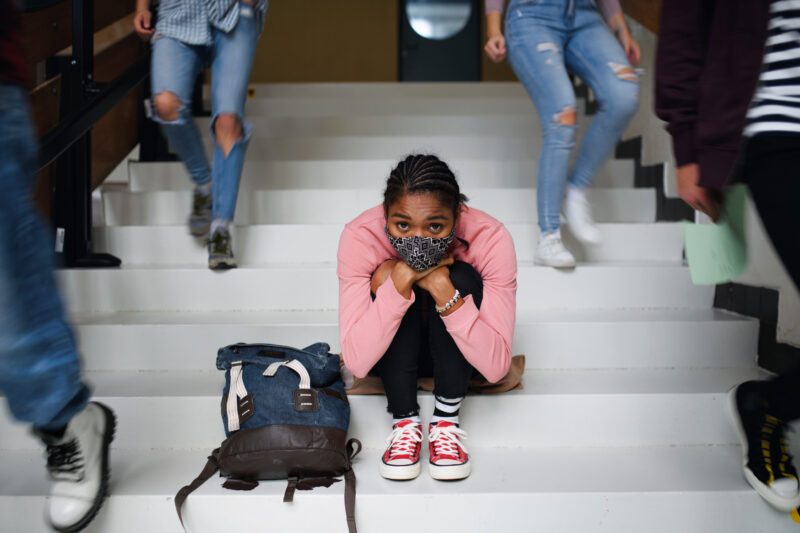5 Dangerous Relationships Students in your School Need to Know About
Friends mean a lot to the teens in your school. In fact, peer relationships are so important they are often referred to as the second family. And yet peer relationships can often be harmful in the life of a teen. Poor or dangerous relationships can lead to risky behavior, substance abuse, truancy, and worse. For teens, having the right friends can have a huge impact on where life leads.
But breaking up bad friendships isn’t easy, even when students are aware of the problems. Students feel comfortable in their relationships, unhealthy ones too. Most students admit that they would rather stick with their friends, even if they know those friends are bad for them, than go it without a social circle. Teens also admit they would do anything for their friends but often their friends would not do the same for them.
When friendship becomes abuse
For those who are around teens every day, you have probably seen these types of friendship, both good and bad. But the story may be worse than what you see in your high school hallways. Teen WebMD reports that many teens think abusive relationships only include hitting and shoving. In reality, there are many abusive behaviors that lots of people, teens included, do not recognize as abuse. Even worse, many teens think some abusive behaviors are normal. And both guys and girls can find themselves in abusive relationships in their teenage years, relationships that have lasting negative effects for the rest of their lives. About 9% of teens suffer physical abuse at the hands of another teen. Others suffer emotional and verbal abuse as well as controlling behavior.
A great need
So what exactly do we need to teach kids to keep them safe? How do we help them recognize dangerous relationships before it is too late? Plus, we need to help young people understand that dangerous relationships aren’t just with significant others. Teens can find themselves in dangerous relationships in every area of their life.
And when someone is in a dangerous relationship, that relationship probably isn’t going to get better. More often, it goes from bad to worse. So what do we do to protect the teens at our schools and give them the tools to secure healthy relationships in their lives?
Keeping teens safe through SEL
One way is through Social Emotional Learning. SEL may be a bit of a buzz word in the educational community these days, but that does not negate its need. Studies show that SEL has long term benefits for students in academics, behaviors, attitudes, and skills. BASE Education offers an entire course for teens on dangerous relationships that teaches them how to be safe and successful and offers resources to get out of dangerous relationships if necessary.
But whether you use BASE or another SEL program in your school, teaching kids about these dangerous relationships is essential. iEmpathize identifies 5 disguises that abusers wear, disguises that lead to dangerous and/or abusive relationships, and our students need to know about them. Here is a snapshot of each one.
5 Dangerous Relationships Students in your School Need to Know About
The Pretender
The pretender does just what you might picture, pretends to be someone else in order to get close to someone. They may act in the role of parent, significant other, or sibling. The pretender creates a fake relationship in order to get close to individuals and then pulls them into a dangerous situation.
The Promiser
When life is rough, promises of something better are tempting. Abusers take advantage of this dynamic by promising things that appeal to others: a dream job, a great lifestyle, travel, or escape from current problems. Promisers use their lies to get close to people but never deliver on those promises. Teens can be lured in because the promiser looks like a quick road to exactly what they want. In reality, they find themselves in relationships that manipulate.
The Provider
The provider can be particularly appealing to kids who lack the necessities of life. They provide clothing, shelter, and other physical needs. But once someone is pulled in, they demand that the person pay them back for whatever they provided. They lure victims in with provision with no strings attached. But later, the teen finds that there are plenty of strings they hadn’t seen before. They can then find themselves controlled by that person until they have “paid back” to that person’s satisfaction.
The Protector
The protector acts as a shield to someone suffering from some type of abuse. They use physical power or intimidation to protect another person. But when someone puts themselves under the protection of an abuser like this, they also put themselves in that abuser’s power. The protector now has control. They often tell the person they are “protecting” who they can be friends with, where they can go, and what they must do, all in the guise of keeping them safe.
Teens can easily get drawn into any of these relationships. And eventually they may realize that these relationships are unhealthy and even dangerous. When that happens, those teens then face the fifth dangerous relationship:
The Punisher
The Punisher uses violence and threats to control another person. Likely, teens who find themselves in a relationship with a punisher started in one of the other unhealthy relationships but didn’t recognize that it was unhealthy. Because the hitting and physical violence didn’t come until later, teens may not have recognized the abusive nature of their relationship. Once unhealthy relationships hit the punisher stage, it becomes more obvious. But teens may find it even more difficult to leave a relationship that has come this far.
The way out
As educators, we know and believe that knowledge is power. When teens in your school are aware of these dangerous relationships, they can recognize them in their own lives when they appear. They can also be on the lookout for relationships that may turn into one of these.
Once teens can recognize these people in their lives, it’s time to give them the tools to get out. Helping them to recognize safe, real, “go-to” people that they can trust is essential. You, your school staff, and your teachers may fill those roles in the lives of your students. Most importantly, your teens need to know that no matter what their struggles are, they are not alone.
As an old saying goes, “A strand of three cords is not easily broken.” Healthy community and good relationships make individuals stronger, and that includes the teens at your school. When they know the danger signs and have people they can turn to for strength and guidance, even those who are already in bad situations will feel confident that they can come out of them and make their way to a safe and happy life.



